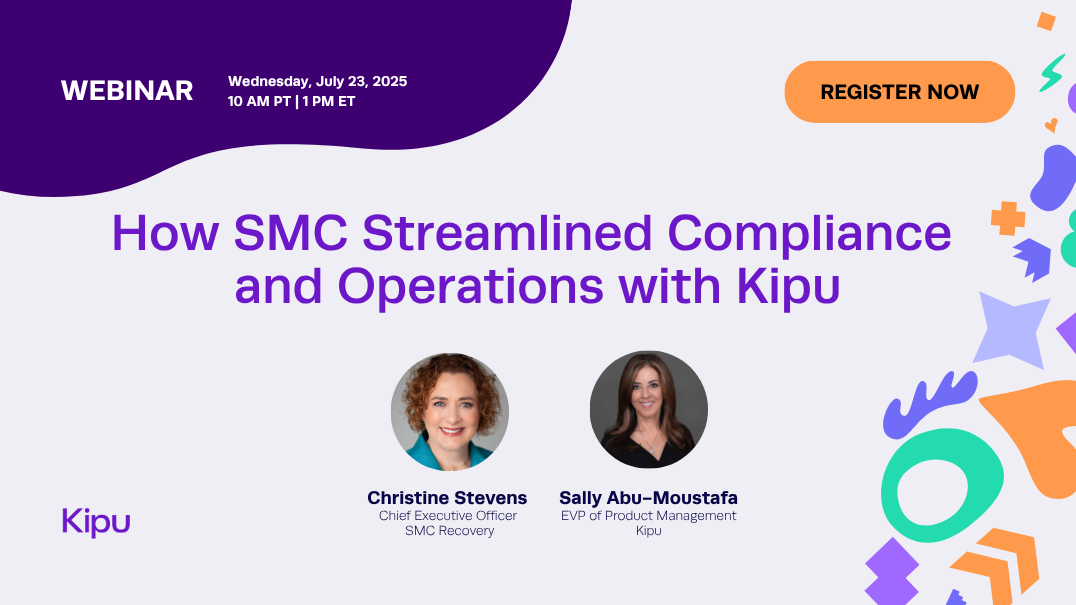ASAM 4: The 5 Key Takeaways from the New Changes

This blog was written by our colleagues Sariah Hopkins and Leah Kendall at Atlantic Health Strategies.
Late last year, the American Society of Addiction Medicine (ASAM) released the fourth edition of The ASAM Criteria, the foundation that payers and facilities use for delivering appropriate care to patients. This new edition reflects changes needed to keep pace with the significant shifts in addiction medicine—the third edition was released more than 10 years ago. These changes signal a significant evolution in addiction medicine, with a clear focus on enhancing patient outcomes through personalized, context-aware treatment strategies.
The ASAM Criteria is the standard for determination of level of care. These guidelines provide a standard nomenclature for describing the continuum of recovery-oriented addiction services. ASAM also provides tools designed for healthcare professionals to evaluate individuals dealing with substance use disorders and related conditions, to drive individualized, patient-centered criteria for treatment planning.
ASAM has harmonized the new Version 4 criteria to the treatment practices of today and the latest scientific insights. This update is the outcome of ASAM’s proactive engagement with treatment providers through surveys and requests for comment, ensuring the guidelines not only align with current medical practices, but also accommodate the realities of treatment delivery.
Here are the biggest takeaways we think everyone should be aware of:
The 5 Key Takeaways from the ASAM 4 Update
- This is a needed evolution: The new guidelines reflect the evolution of addiction treatment practice over the past decade. For example, ASAM 4 extends the evaluation process to consider the patient’s real-life context, striving to align treatment recommendations with what is realistically achievable for each individual. This approach recognizes the diversity of patient needs and aims to ensure that care plans are both practical and supportive.
- There’s a greater emphasis on whole-person care: Providers need to focus on whole-person care, including the social, home, education, work, and other determinants that contribute to long term recovery.
- The changes reflect the chronic nature of addictions: The cycle of treatment ASAM has presented is not a 28-day model, but rather a model that requires life-long vigilance.
- Partial Hospitalization Programs (PHP) are not going away. Providers can rest easy that there have been no material changes to ASAM level 2.5. It is renamed in ASAM as High Intensity Outpatient Treatment, but as Shakespeare said, “a rose by any other name would smell as sweet.” There are no major changes here.
- Make the changes ASAP: Providers should be updating their clinicians, case managers, and their medical software to ASAM Version 4 now. The release of ASAM was in November and we expect to see about 6 months from release to roll out with insurance payers on the adoption of the new guidelines.
Digging Deeper into the Changes
In this new update, significant developments have occurred, yet the core essence remains largely unchanged. There is a pronounced shift towards incorporating external factors into patient evaluations. The criteria’s Dimension 6 has shifted to “Person-Centered Considerations,” placing greater emphasis on external elements that could influence a patient’s recovery journey. This dimension meticulously considers how various external factors, such as childcare availability or its absence, might impact the patient’s Level of Care determination.
These updates place a significant focus on aligning treatment with the patient’s preferences and willingness, moving away from a one-size-fits-all approach to a more tailored and patient-centric model. This nuanced approach in ASAM 4 highlights the importance of patient preference, emphasizing the need to support patients effectively and meet them where they are in their recovery journey.
Additionally, the new ASAM 4 criteria introduces dedicated chapters that specifically address the nuanced needs of patients facing a variety of complex situations. There are now specific chapters on how to address a patient with chronic and acute pain, cognitive impairments, involvement with the criminal justice system, older adults, those in safety-sensitive occupations, and patients who are pregnant or parenting.
While ASAM 3 may have touched on these considerations, ASAM 4 places more of an emphasis on the importance of addressing these factors within the treatment framework. This enhanced focus acknowledges that such conditions represent significant barriers to recovery, underscoring the necessity for a holistic and inclusive approach to addiction treatment that recognizes and addresses the unique challenges faced by these patient groups. By doing so, ASAM 4 aims to improve treatment outcomes by ensuring that these critical factors are not merely acknowledged but are integral to the personalized treatment planning process.
Social determinants of health are more than buzzwords in addiction treatment. ASAM is making it clear that providers must focus on and address social determinants because they are a major driver of the success of treatment. We can’t treat a homeless patient in an inpatient setting, then send them back to the streets and expect them to have a successful recovery, any more than we can send a sober husband or wife back to a spouse in active addiction and expect the partner in early recovery to stay sober.
Another important change to note is WM, which stood for withdrawal management, has been removed from the ASAM levels. Withdrawal Management is now part of all the 7 levels of care, and co-occurring disorders and complications are inherently included as standard rather than the exception. and co-occurring disorders and complications are inherently included as standard rather than the exception. ASAM has also added Recovery Residences as level RR. RR can stand alone or be combined with other levels. For instance, you can have a patient in level 2.1 with RR. This exactly mirrors how we are actually treating patients in early recovery now, and places a new emphasis on how peer recovery and recovery housing communities are an essential part of the path to long term sobriety.
One of the most welcome changes in ASAM 4 is the specificity and clarity the criteria delivers. Certain areas that were vague before now are clearly spelled out. For instance, the minimum number of clinical hours per week in residential level of care in ASAM version 4 is documented as 20—prior to this release, there was no defined standard.
What Providers Should Do Now
The good news? Many of the changes to ASAM will not require a change with the providers at all. In many ways, ASAM has caught up to the changes in how providers are already providing care. In the environment of the EMR, forms for ASAM Transfers all need to be updated. There are standardized assessments that need to be added if they don’t already exist.
We believe it is important for providers to focus on continuing education around social determinants of health and place a greater emphasis on continuing care. For outpatient only providers, outpatient therapy is no longer level 1, it’s level 1.5. Level 1 is remission, and it reflects those patients who have completed treatment, may engage in occasional therapy, but are stable in their sobriety. Level 1.7 is there for outpatients on long term medications for the treatment of alcohol or opiate disorders. Providers will need to learn these new levels and adapt to proper patient placement. In the RCM world, billing teams should familiarize themselves with Z codes to help further evidence that social determinants are part of the treatment plan.
However, the new criteria essentially requires that facilities offer individualized care to each patient, which involves a comprehensive understanding of the expanded levels of care and ensuring staff are trained to accurately assign patients to the appropriate level of care. This can be a challenge, especially since these changes will be coming live with payers very soon, and not getting up to speed in time could mean you’re out of compliance.
We’re excited for these changes, and believe they’ll help to elevate and improve how we deliver care. If you’re feeling worried about the changes or need more help understanding or implementing them, Kipu and Atlantic Health Strategies can help. Kipu is currently working on form updates which will soon roll out across their software, as well as an integration with ASAM Continuum. Atlantic Health Strategies is accepting engagements related to EMR updates, and staff trainings to help everyone prepare for the shift from ASAM 3 to ASAM 4. Check us out at kipuhealth.com and atlanticbehavioral.com for additional insights.
Rely on Kipu to keep you ahead of change.
Subscribe to Kipu for behavioral health news, updates, community celebration, and product announcements.




